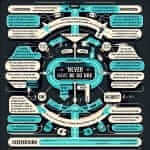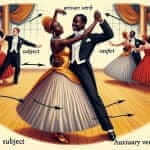The phrase “Hardly had I entered when I felt the chill” often leaves IELTS students feeling a chill of their own! It’s a construction that sounds formal and a little old-fashioned, yet it pops up frequently in literature and even everyday speech. Understanding how to use this structure correctly can significantly enhance your grammatical range and impress the IELTS examiner. This article delves into the nuances of this intriguing grammatical structure and equips you with the knowledge to wield it confidently in your IELTS exam.
For instance, imagine you’re asked to describe a memorable experience in the speaking test. Instead of saying, “As soon as I walked into the haunted house, I felt scared,” you could say, “Hardly had I entered the haunted house when a shiver ran down my spine.” See how much more impactful and vivid your language becomes?
Deconstructing “Hardly… When”: A Sign of Advanced Grammar
The “hardly…when” construction signals that one event happened immediately after another, often with an element of surprise or suddenness. In IELTS, demonstrating control over complex grammatical structures like this contributes significantly to a higher band score, particularly in the speaking and writing sections.
The Formula for Success
Here’s the breakdown of this structure:
Hardly + had + Subject + Past Participle + when + Subject + Past Simple
Let’s dissect this formula:
- Hardly: This adverb emphasizes the immediacy of the first action.
- Had + Past Participle: This forms the past perfect tense, indicating the action that happened first.
- When: This conjunction connects the two clauses and shows the swift succession of events.
- Past Simple: This tense describes the action that followed immediately.
 Hardly When Example
Hardly When Example
Applying the Formula in IELTS
-
Speaking (Part 2: Describe a memorable event):
“Hardly had I stepped off the plane in Tokyo when I was enveloped by a wave of unfamiliar sights and sounds.”
- This sentence vividly portrays the immediate sensory overload the speaker experienced upon arriving in a new country.
-
Writing (Task 1: Describing a process):
“Hardly had the mixture been heated when it began to transform, changing from a thick paste into a flowing liquid.“
- This example precisely illustrates the rapid change in the substance’s state due to the heating process.
Mastering “Hardly…When” for a Higher Band Score
To truly stand out, consider these tips:
- Placement of “Hardly”: While the formula shows “hardly” at the beginning, it can also appear after the subject for a slightly less emphatic tone. For example, “I had hardly finished speaking when the audience erupted in applause.”
- Synonyms for Impact: Experiment with synonyms for “hardly” like “scarcely” or “no sooner” to showcase vocabulary range.
- Inversion for Formality: The inversion of subject and auxiliary verb (“had I entered”) adds a touch of formality. Use it strategically in writing tasks requiring a more academic tone.
Common Errors to Avoid
- Incorrect Tense Sequence: Ensure the first action is in the past perfect and the second is in the past simple.
- Overuse: While impressive, using this structure too often can sound unnatural. Reserve it for situations where it truly enhances the impact of your writing or speaking.
Conclusion
Mastering the “hardly…when” construction is like adding a powerful tool to your grammatical toolbox. By understanding its mechanics and practicing its use, you’ll be well-equipped to craft sophisticated sentences that capture attention and elevate your IELTS performance. Remember to pay close attention to tense consistency and avoid overusing this structure. With dedicated practice, you’ll be able to use this and other complex grammatical structures naturally and confidently, impressing the examiner and boosting your chances of achieving your desired IELTS band score.


